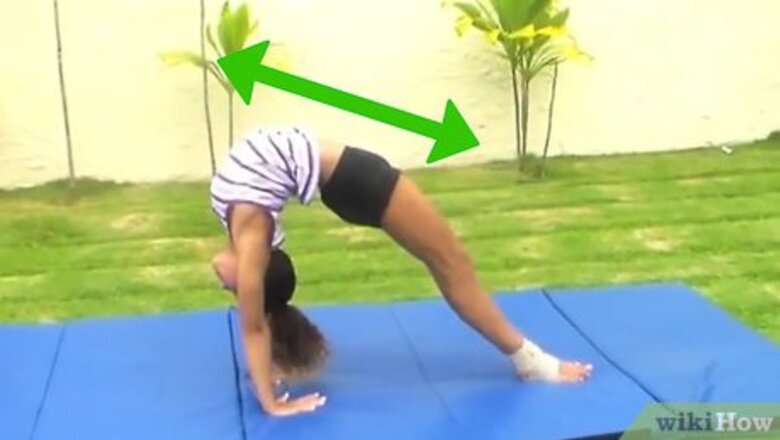
views
Practicing with Drills

Stretch to improve your flexibility. Warming up your legs, ankles and back beforehand will minimize the risk of injury. If your body is not limber during a back handspring, there's a chance you won't adjust properly to the flip. Regardless of the sport you're practicing for, it's always important to give your body a bit of a warm up before the fact. Stretch and roll your wrists. This is the area that risks the most strain when you execute your back handspring, so it's a good idea to give it some extra love prior to attempting the technique.

Prepare a soft surface for your back handspring. A soft surface, like yard grass,mat, or bed mattress is necessary in order to practice your back handsprings. A hard surface won't give you the cushion you need to spring back, and the risks of injury are much higher. Investing in a mat will allow you to practice your back handsprings from virtually any location.
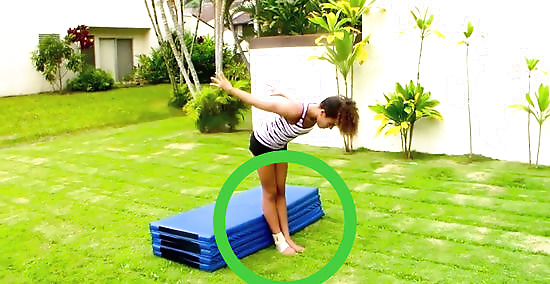
Work on needle kicks. Needle kicks will help to train the force in your legs, which is needed to execute the initial flip backwards. To do a needle kick, raise your knees, and launch your leg out in a kicking motion. Repeat this 15-20 times for each leg to complete a full set. Doing a set of these before attempting a back handspring will ensure your leg muscles are properly warmed up for the technique.
Use a trampoline for gymnastics practice. A trampoline offers a safe, welcoming arena to practice your backflips. If you're relatively new to back handsprings and flips in general, practicing them on a trampoline helps to alleviate the fear of injuring yourself.

Practice handstands. The cornerstone of a successful back handspring is a handstand. You should practice these as part of your regular workout. Aim your arms downward and lay your hands flat on the ground. Holding your hands in place, launch yourself forward and lift your legs off the ground. Handstands can be held for several seconds or longer if you have the flexibility and strength. They may take a long time to master, but it's a necessary step to take if you want to get good at back handsprings. Training up your handstand balance will make it easier to control the stage of a back handspring when your hands meet the ground. Being used to the experience of a handstand will make the back handspring feel more fluid. Training yourself with 20 second handstands in reps of 5 is a good place to start if you already have the basics figured out.
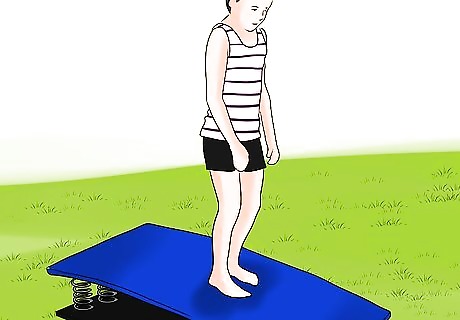
Train your handspring using a vault board. Especially starting out, many gymnasts have difficulty mustering the strength it takes to launch their bodies in a flip. A vault board will give you the extra force necessary to achieve a flip. This will allow you to focus on other facets of your technique. Using a vault board can help you to focus on improving your control, rather than putting the effort into the force of jumping itself. This is particularly helpful if you have difficulty with the initial leap.
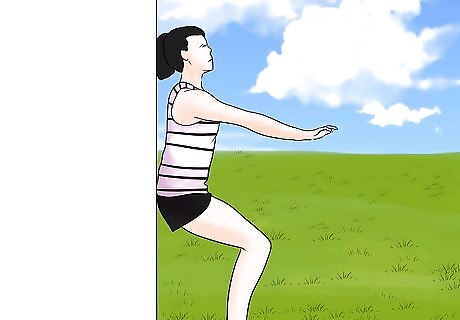
Squat against a wall. Squatting against a wall is a common way to build leg strength. Rest your back against wall, and lower your body down. This will cause a bend in your legs. Get your squat down to the point where your legs are arched at a 90 degree angle. This should cause a noticeable burn in your leg muscles. If your legs are stronger, you'll be able to leap higher, giving your back handspring greater initial force. Hold your squat for 30 seconds, then give yourself 30 seconds to rest before you attempt another rep.
Adjusting Your Technique
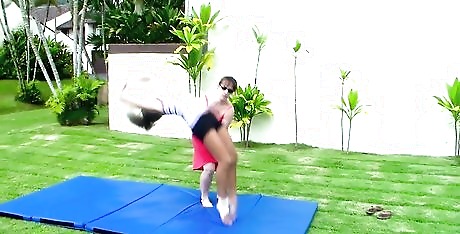
Enlist the help of a coach. Sports coaches have the experience and training to notice issues with your technique that you or your friends might not pick up on. Whether at a subscription gym or as part of a gymnastics team, getting help from a coach can take you from being good to great. It is especially helpful if you have a positive working relationship with the coach. Many coaches find satisfaction in seeing their students thrive. This can have a positive moralizing effect on you if you're feeling frustrated by the learning curve. Having a coach around can also help limit the risk of personal injury if he doubles as a spotter.
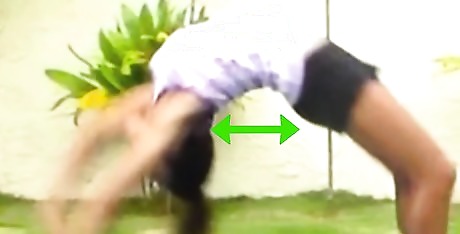
Keep your back relatively straight throughout the back handspring. Keep your back as straight as you can throughout your back handspring (be sure not to "undercut"). It's a common mistake for beginning gymnasts to bend their backs too far as they execute this maneuver. Unfortunately, this makes it more difficult for your body's weight to complete the flip, and you have an increased risk of injury if your spine is at an unnecessary arc.

Launch yourself from a squatting position. If you have had some training doing wall squats, the wall squat position is the stance you'll want to be in as you launch yourself backwards. Bring your legs to a near-90 degree angle. This will maximize your body's force as you launch upwards. You should 'sit back' as you might in a chair when you start your back handspring. It can also be useful to practice doing your back handsprings over an octagonal tumbling mat at first.
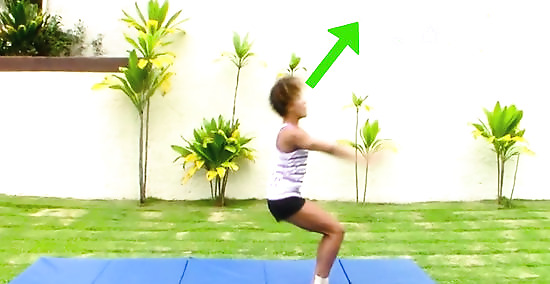
Keep your head straight and level. Keep your head straight throughout the back handspring. This reduces the risk of injury. It also helps ensure that your weigh is evenly displaced on both sides. If your head is turned one way or another, you will have a tendency to shift your body's weight in that direction.
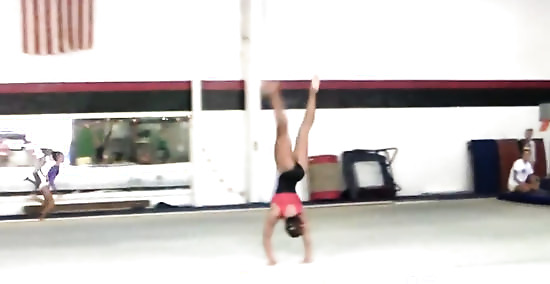
Record your technique on video. If you record yourself executing a back handspring on video, you'll be able to see yourself do it from an exterior perspective. This will offer you the opportunity of analyzing your technique objectively. There may be things you notice yourself doing on video that you weren't conscious about when you were doing it.
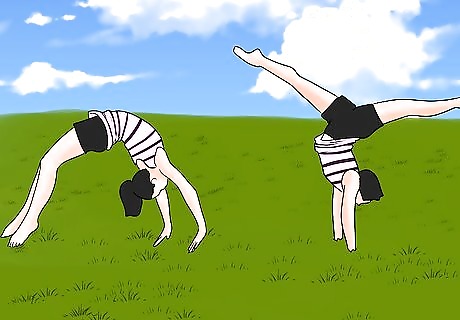
Combine back handsprings with other techniques. Once you get the hang of traditional back handsprings, you can solidify your skill by combining it with other techniques. Tumbling and round-offs are just a couple of the techniques gymnasts tend to combine back handsprings with. Although juggling multiple techniques at once ups the challenge, you'll know you have mastered the handspring itself when you're able to combine it with ease.
Maximizing Your Athleticism
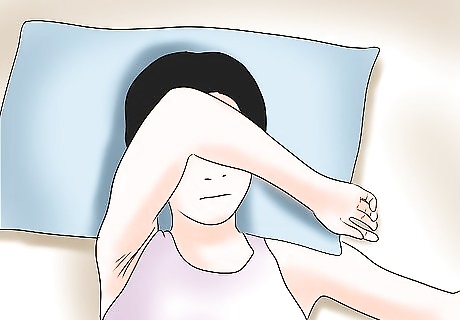
Sleep at a regular time each night. Even if you're not actively training, you'll do yourself a disservice by cutting short on sleep. Regular, sufficient sleep is especially important if you're into athletics. Getting between 7-9 hours is optimal, although you may want more if you have a particularly straining athletics test the next day. With proper rest, you'll be able to execute greater back handsprings with less conscious effort.
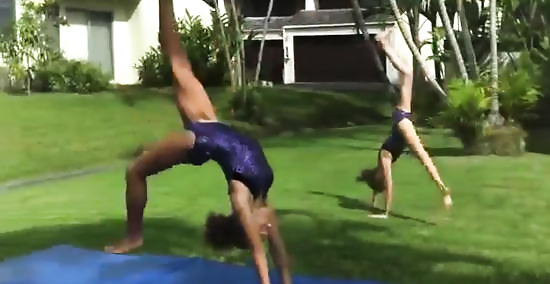
Train with a partner. Training and exercising are far more satisfying when they're done with a partner. If you have a friend who is training in the same skills you are, you'll be able to help each other. One of you can act as a spotter while the other executes the techniques. Above all, the moralizing aspect of training as a team will push you past the boundaries you thought you had.

Drink sufficient water. Water is vital for all athletic exercises, and it's especially important in gymnastics. Drinking ample water helps to ensure that your joints are lubricated. If you're dehydrated, your body won't function at the level it should. Ample water intake will loosen up your joints, giving your body greater flexibility when you attempt a back handspring. Some athletes believe you should multiply your body weight by 0.6 to arrive at the number of ounces you should be drinking each day if you're wanting to get serious about athletics.

Believe in yourself. Although believing in oneself sounds like cheap advice there are few places it means more than in athletics. If you feel like you're not cut out for a back handspring, you'll have a low chance of pulling it off regardless of your physical aptitude. Go into each training session with a positive outlook. You should take comfort in the fact you are going out of your way to hone your body and improve yourself. Back handsprings are difficult, and require a fair amount of focus on the part of the gymnast. If you have issues with self-confidence, clearing up the emotional aspect will see tangible improvements in your technique.
















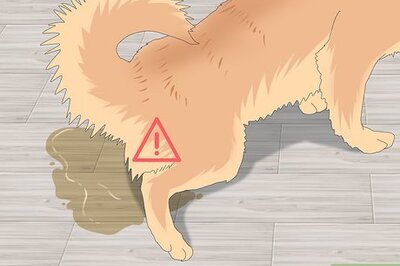

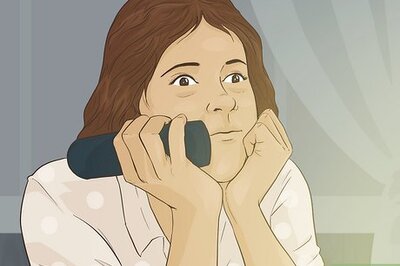

Comments
0 comment